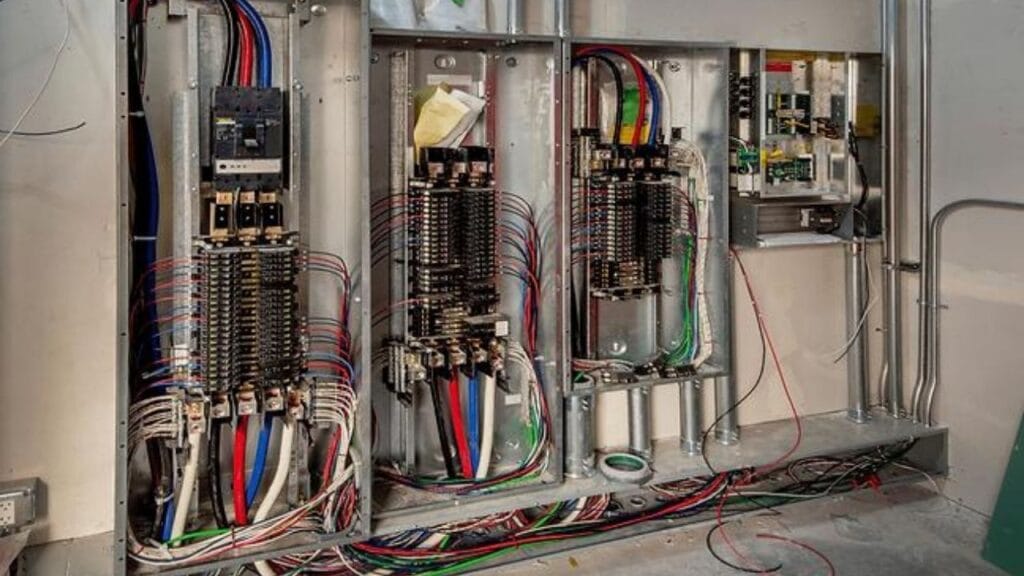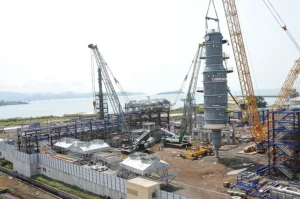Powering Progress
Electrical installation is the nervous system of any modern building.1 It’s the intricate network that delivers power for lighting, appliances, security systems, communication, and the myriad other functions that make a structure habitable and operational.2 Whether it’s a humble residential dwelling or a sprawling commercial complex, a well-designed and expertly executed electrical installation in building construction is paramount for safety, functionality, and future adaptability.3
This comprehensive guide delves into the essential aspects of electrical installation in building construction. We will explore the key stages involved, the crucial components, safety regulations, best practices, emerging trends, and the importance of professional expertise in ensuring a reliable and safe electrical system for any building project. Understanding these intricacies is vital for developers, contractors, architects, and homeowners alike, as a robust electrical infrastructure is the foundation upon which modern living and working are built.
The Foundational Importance of Electrical Installation in Building Construction:
A properly planned and executed electrical installation is not an afterthought in building construction; it’s an integral part of the design and construction process from the very beginning.4 Its significance stems from several critical factors:
- Safety: The primary concern in any electrical installation is safety. Faulty wiring, improper grounding, or inadequate protection can lead to electrical shocks, fires, and other serious hazards.5 Compliance with stringent safety regulations and the use of quality components are non-negotiable.6
- Functionality: A well-designed electrical system ensures that the building can effectively support its intended use. This includes providing adequate power for lighting, heating, ventilation, air conditioning, appliances, machinery, and communication systems.7
- Comfort and Convenience: Modern living and working rely heavily on electricity.8 A thoughtfully planned installation enhances comfort and convenience by providing strategically placed outlets, appropriate lighting levels, and provisions for various electronic devices.9
- Efficiency: A properly designed and installed electrical system can contribute to energy efficiency.10 Using appropriate wire sizes, minimizing voltage drop, and incorporating energy-saving devices can reduce energy consumption and lower operating costs.
- Future Adaptability: Buildings often undergo renovations or expansions over their lifespan. A flexible and well-documented electrical installation allows for easier modifications and additions to accommodate future needs.11
- Compliance with Building Codes: Electrical installations must adhere to national and local building codes and standards.12 These regulations are in place to ensure safety and quality.
- Property Value: A safe, functional, and well-maintained electrical system significantly contributes to the overall value of a property.13
Key Stages of Electrical Installation in Building Construction:
The process of electrical installation in building construction typically unfolds in several distinct stages, requiring close coordination between the electrical contractor and other trades:14
1. Design and Planning:
- Load Calculation: The first crucial step is to determine the total electrical load the building will require based on its intended use, size, and the number and type of electrical appliances and equipment that will be used.
- Circuit Design: Based on the load calculation, the electrical system is divided into circuits, each serving specific areas or appliances.15 The number and capacity of circuits are determined to prevent overloading.
- Wiring Diagrams and Layouts: Detailed wiring diagrams and electrical layouts are created, showing the location of all outlets, switches, light fixtures, distribution boards, and other components.16 These plans are essential for accurate installation.
- Component Selection: Appropriate types and sizes of wires, cables, conduits, protective devices (circuit breakers, fuses, residual-current devices – RCDs/GFCI), switches, outlets, and light fixtures are selected based on the load requirements and safety standards.
- Compliance with Standards: All design and planning must strictly adhere to relevant national and local electrical codes and safety regulations.
2. Rough-in Wiring:
- This stage occurs after the building’s framing is complete but before the interior walls are finished.
- Installation of Conduits and Raceways: Conduits (rigid or flexible pipes) and raceways (channels) are installed within walls, ceilings, and floors to protect and route electrical wires and cables.
- Pulling Wires and Cables: Wires and cables of the correct type and size are pulled through the installed conduits and raceways according to the wiring diagrams.17
- Installation of Back Boxes: Outlet boxes and switch boxes are securely mounted within the wall cavities at designated locations.
- Earthing/Grounding System: A crucial safety component, the earthing or grounding system is installed to provide a path for fault currents to flow safely to the earth, minimizing the risk of electric shock.18 This typically involves installing earth rods, connecting them with earth wires, and bonding metallic parts of the electrical system.
3. Wiring Termination and Device Installation:
- This stage takes place after the interior walls are finished (e.g., drywall is installed).
- Connecting Wires to Outlets and Switches: Wires are carefully terminated at outlet receptacles and switch terminals according to the wiring diagrams and color codes.19
- Installation of Light Fixtures: Light fixtures are mounted and wired correctly.
- Connection to Appliances: Provisions are made for connecting permanently installed appliances (e.g., water heaters, air conditioning units).
4. Installation of the Distribution Board (Electrical Panel):
- The distribution board, or electrical panel, is the central hub of the building’s electrical system.20
- Mounting the Panel: The distribution board is securely mounted in an accessible location.21
- Connecting Incoming Power: The main power supply from the utility company is connected to the main breaker in the panel.
- Connecting Branch Circuits: Individual circuits from around the building are connected to their respective circuit breakers within the panel.
- Labeling: All circuit breakers are clearly labeled to indicate the areas or appliances they control.
5. Testing and Commissioning:
- This is a critical stage to ensure the safety and functionality of the entire electrical installation before the building is occupied.
- Continuity Testing: Verifies that wiring paths are complete and unbroken.
- Insulation Resistance Testing: Checks for any breakdown in the insulation of wires and cables, which could lead to short circuits or leakage currents.22
- Earth/Ground Resistance Testing: Ensures the effectiveness of the grounding system.
- Polarity Testing: Confirms that wires are connected correctly (live, neutral, earth).
- Functional Testing: Verifies that all outlets, switches, and light fixtures operate as intended.
- Load Testing (Optional): In some cases, the system may be tested under load to ensure it can handle the expected power demands.
6. Documentation and Handover:
- Upon successful testing and commissioning, comprehensive documentation of the electrical installation is prepared.23
- As-Built Drawings: These are updated drawings reflecting the actual installation, including the location of all components and wiring routes.
- Test Reports: Records of all tests performed and their results.
- Component Specifications: Details of all electrical components used.
- Operating and Maintenance Instructions: Guidelines for the safe operation and maintenance of the electrical system.
- Warranty Information: Details of warranties for electrical components.
This documentation is handed over to the building owner or manager for future reference and maintenance.
Crucial Components of Electrical Installation:
A typical electrical installation in building construction comprises various essential components:
- Wiring and Cables: Conductors that carry electrical current.24 Different types and sizes are used depending on the load and application.25 Common types include PVC-insulated copper wires and cables.
- Conduits and Raceways: Protective pathways for wires and cables, providing mechanical protection and preventing damage.26
- Outlets (Receptacles): Points where electrical appliances can be connected. Different types are used for different applications and voltage ratings.27
- Switches: Devices used to control the flow of electricity to lights and other fixtures. Various types exist, including single-pole, double-pole, and dimmer switches.28
- Light Fixtures: Devices that provide illumination. A wide variety of types and styles are available for different lighting needs.29
- Distribution Board (Electrical Panel): The central control and protection point for the building’s electrical circuits, housing circuit breakers or fuses.30
- Circuit Breakers and Fuses: Overcurrent protective devices that automatically interrupt the flow of electricity in case of an overload or short circuit, preventing damage and fires.31
- Residual-Current Devices (RCDs) / Ground Fault Circuit Interrupters (GFCIs): Highly sensitive protective devices that quickly disconnect the power supply in case of a ground fault, significantly reducing the risk of electric shock.32
- Earthing/Grounding System: A safety system that provides a low-resistance path for fault currents to flow to the earth.
- Isolators and Disconnect Switches: Devices used to safely isolate sections of the electrical system for maintenance or repair.33
- Cable Trays and Ladders: Support systems for large quantities of cables in commercial and industrial buildings.
Safety Regulations and Best Practices:
Adherence to safety regulations and best practices is paramount in electrical installation in building construction:
- Compliance with National and Local Electrical Codes: Strict adherence to the relevant electrical codes and standards is mandatory.34 These codes specify requirements for wiring methods, materials, protection devices, and installation procedures.35
- Use of Approved Materials and Components: Only use electrical materials and components that are approved and certified by recognized testing organizations.
- Proper Wire Sizing: Selecting wires and cables with the correct current-carrying capacity for the intended load is crucial to prevent overheating and fires.36
- Correct Wiring Methods: Employing appropriate wiring methods as specified by the electrical codes ensures safety and longevity of the installation.37
- Effective Earthing/Grounding: A properly installed and tested earthing system is essential for protecting against electric shock.38
- Installation of RCDs/GFCIs: Using RCDs/GFCIs in areas where there is a high risk of electric shock (e.g., bathrooms, kitchens, outdoor areas) is a critical safety measure.
- Proper Termination and Connections: Ensuring that all wire terminations and connections are secure and correctly made prevents loose connections, overheating, and potential hazards.
- Clear Labeling: Clearly labeling all circuit breakers in the distribution board makes it easy to identify and isolate circuits for maintenance or in case of faults.39
- Professional Installation: Electrical work should always be carried out by qualified and licensed electricians who are knowledgeable about the relevant codes and best practices.40
- Regular Inspection and Maintenance: Periodic inspection and maintenance of the electrical installation are essential to identify and address any potential issues before they become hazardous.41
Emerging Trends in Electrical Installation:
The field of electrical installation is constantly evolving with new technologies and trends:
- Smart Home Systems: Integration of smart devices for lighting control, appliance management, security, and energy monitoring is becoming increasingly common.
- Energy Efficiency: Focus on energy-efficient lighting (LEDs), smart thermostats, and systems that optimize energy consumption.
- Renewable Energy Integration: Provisions for connecting solar panels and other renewable energy sources to the building’s electrical system.
- Electric Vehicle (EV) Charging Infrastructure: Incorporating charging stations for electric vehicles, especially in residential and commercial buildings.42
- Data and Communication Cabling: Integration of structured cabling for data networks, telecommunications, and audio-visual systems.
- Building Automation Systems (BAS): Comprehensive systems that control and monitor various building services, including electrical, mechanical, and security systems.43
- Wireless Technologies: Increased use of wireless technologies for lighting control and communication within the electrical system.44
The Importance of Professional Expertise:
Given the critical nature of electrical installation for safety and functionality, it is imperative that this work is entrusted to qualified and licensed electrical contractors. Professional electricians possess the necessary knowledge, skills, and experience to:
- Design safe and efficient electrical systems.
- Install wiring and components correctly and in compliance with codes.
- Perform thorough testing and commissioning.
- Provide accurate documentation.
- Identify and address potential hazards.45
- Keep up-to-date with the latest technologies and regulations.
Attempting electrical work without the proper training and qualifications can be extremely dangerous and can lead to serious accidents, property damage, and legal liabilities.46
Conclusion: Powering the Future with Safe and Efficient Electrical Systems:
Electrical installation in building construction is a complex and critical process that demands meticulous planning, skilled execution, and strict adherence to safety regulations.47 A well-designed and professionally installed electrical system is the backbone of any modern building, providing the power necessary for comfort, convenience, and productivity.48 By understanding the key stages, components, safety practices, and emerging trends, developers, contractors, and homeowners can appreciate the importance of a robust electrical infrastructure and ensure that their building projects are powered safely and efficiently for years to come. Entrusting this vital work to qualified professionals is not just a matter of compliance; it’s an investment in the safety, functionality, and longevity of the building itself. As technology continues to advance, the role of expert electrical installation will only become more crucial in powering the progress of our built environment.




